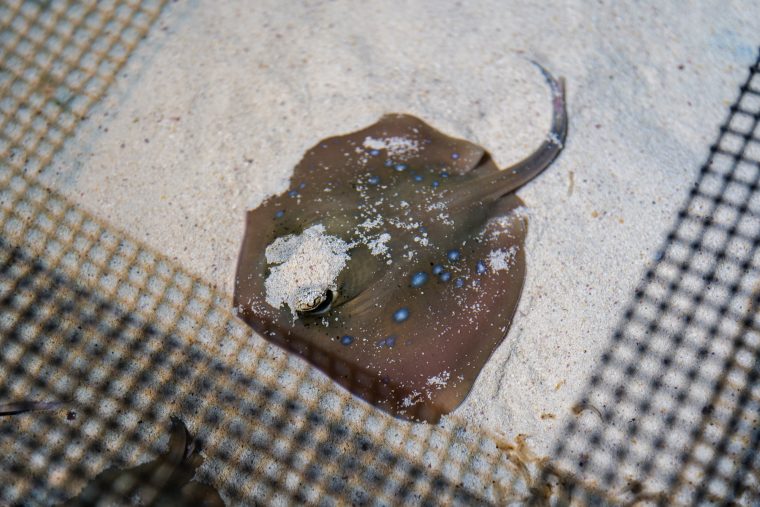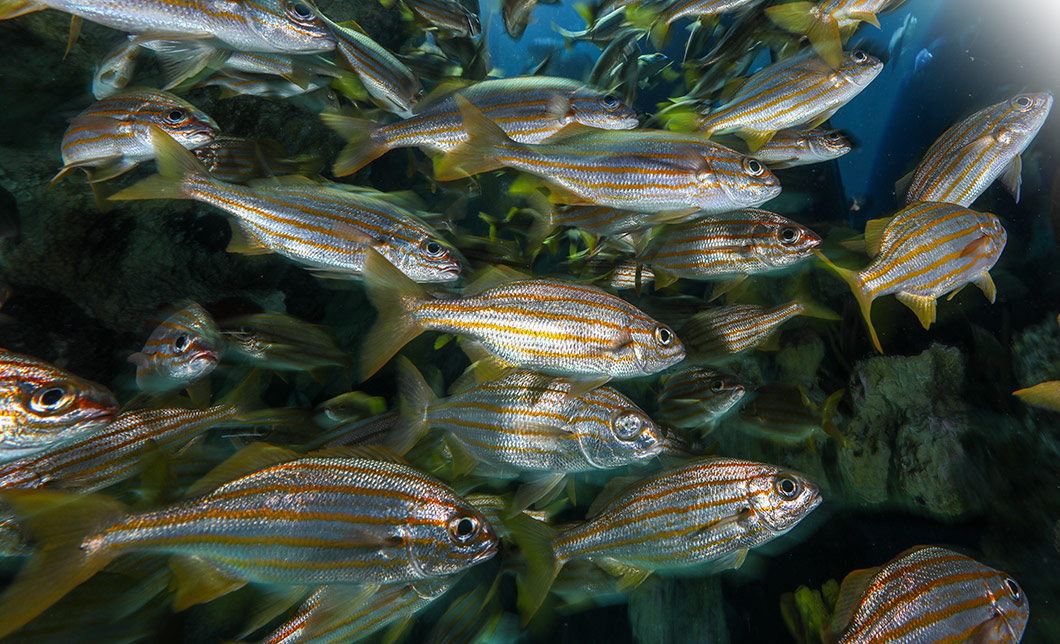We will be closed on Tuesday, April 30, for a day of strategy work and team building.
The New Balance Foundation Marine Mammal Center will be closed for exhibit maintenance on Monday, April 29 and Wednesday, May 1.
Pups to stay behind-the-scenes until ready for touch tank

BOSTON, MASS. (March 4, 2021) – The New England Aquarium is welcoming four bluespotted maskray pups for the first time since 2017.
*PHOTOS AND VIDEO ARE AVAILABLE HERE, COURTESY NEW ENGLAND AQUARIUM*
The rays were born to two females at the Aquarium in January. They have a striking appearance, with distinctive mask-like shading around their eyes and iridescent blue spots on their fins. The pups started off shy, burrowing in the sand for much of the day, but have become more active in recent weeks as they remain behind the scenes in conditions that mimic the wild.
“These pups learn to adapt to their environment quickly. In the wild, they have to be able to swim, bury themselves, and evade predators from the very beginning of their lives,” said Sarah Tempesta, supervisor of interactive exhibits.
The pups are a result of the Aquarium’s bluespotted maskray rearing program, which launched in 2014. The program is part of the Aquarium’s conservation work to safeguard ocean animals and habitats, providing a sustainable way to repopulate exhibits without disturbing wild populations. This species, which is native to the tropical waters of the Southwest Pacific, does not have an official designation on the IUCN Red List of Threatened Species because it is considered “data deficient,” meaning there is not enough information to determine if they are endangered or threatened. This past spring, after years of careful planning, Tempesta paired two female maskrays with a male. The females successfully conceived sometime during a two-month timespan. They began to show swollen abdomens, at which point animal health staff performed an ultrasound to determine how many pups the females were expecting. One female delivered three pups while the other gave birth to one.
Rearing rays takes quite a bit of dedicated time and attention from the Aquarium’s animal care team. The pups grow quickly and require a lot of food, as they eat several meals a day of shrimp, clams, squid, and fish. These rays will stay behind the scenes at the Aquarium for the next 12 to 18 months, until they are ready to join other animals. Once the pups are fully grown, the two females will reside in the Aquarium’s Trust Family Foundation Shark and Ray Touch Tank, while the two males will go to another aquarium.
“Once they go into the touch tank, these animals will be able to inspire visitors to help us protect the blue planet and become ocean stewards,” said Tempesta, who manages the ray rearing program at the Aquarium.
The Aquarium will be offering a Facebook Live on Thursday, March 4, at 3:30 p.m. to learn more about the maskray pups and the Aquarium’s rearing program.
MEDIA CONTACT:
Pam Bechtold Snyder – psnyder@neaq.org, 617-686-5068

